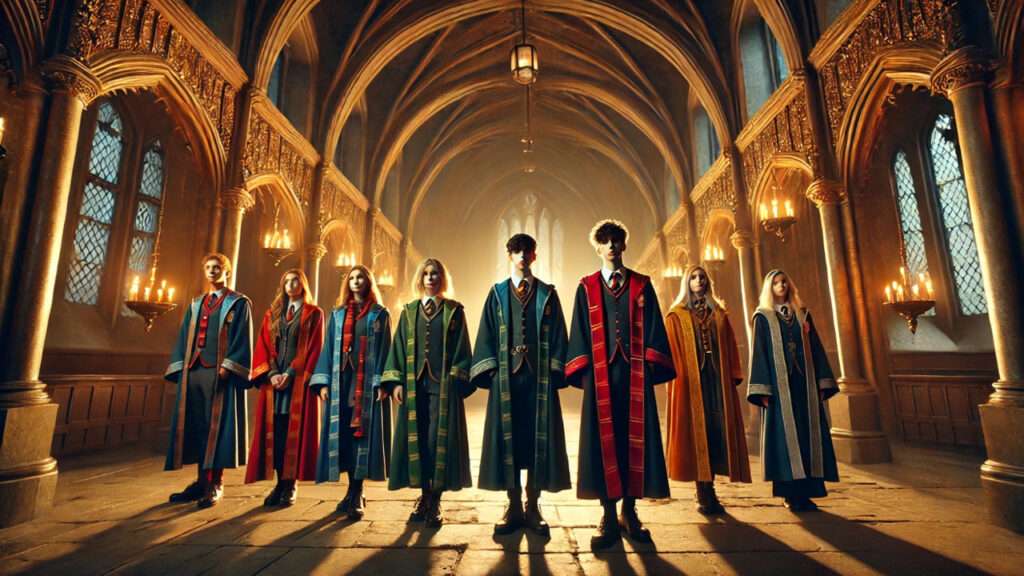
Harry Potter Costume Design Secrets: Behind-the-Scenes Details Every Fan Should Know
Ever wondered how the Harry Potter films made the wizarding world feel so real? 🧙♂️ It wasn’t just the spells and settings—it was the costumes. From Harry’s evolving wardrobe to Luna Lovegood’s quirky accessories, every stitch told a story. Yet, most fans only see the surface. The real Harry Potter costume design secrets lie behind the scenes—where magic met meticulous craftsmanship.
Whether you’re a curious fan, a budding cosplayer, or a costume design enthusiast, understanding these hidden details can transform how you view the entire series. In this article, we’ll reveal the untold design choices, practical techniques, and creative challenges that brought your favorite characters to life. Keep reading—because the robes, wands, and even socks have stories to tell. 🧦✨
Table of Contents
Toggle1.The Magic Behind the Wardrobe: Why Harry Potter Costume Design Stands Out ✨
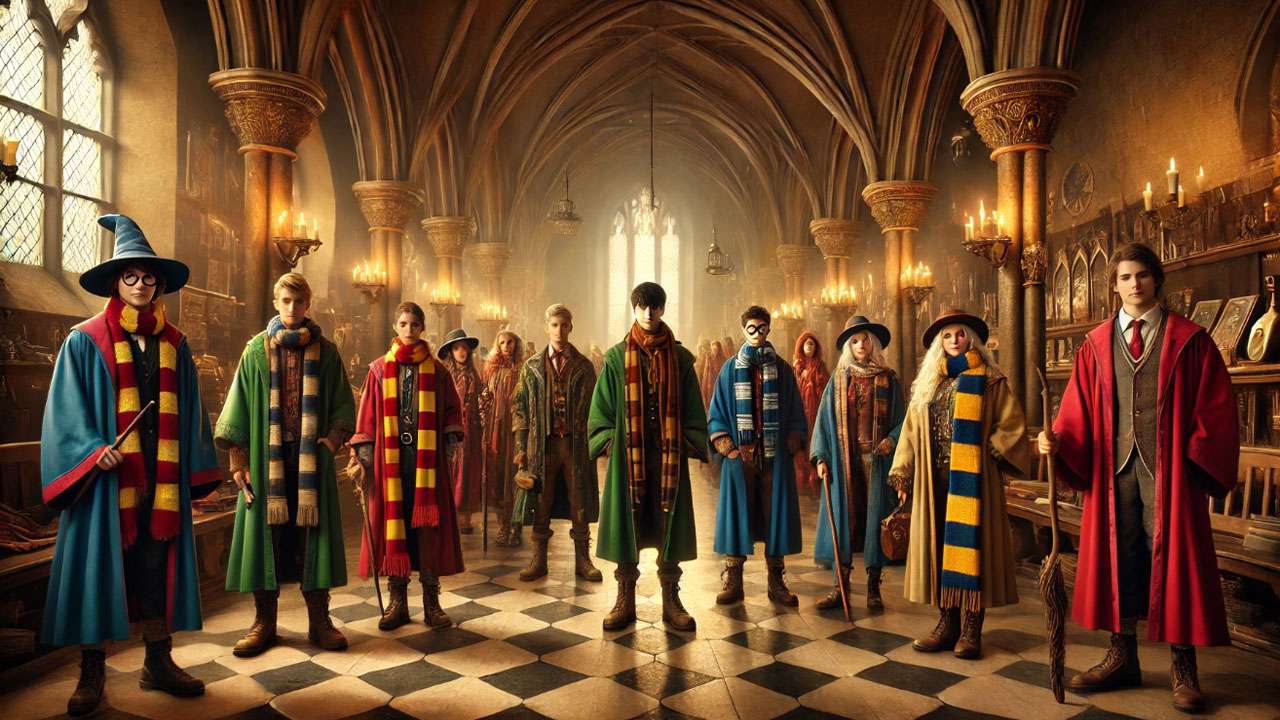
What made Harry Potter feel so real—so lived-in and magical? It wasn’t just the castles and spells. The Harry Potter costume design secrets played a huge role in bringing the Wizarding World to life.
Unlike many fantasy films that rely heavily on CGI or over-the-top designs, the Harry Potter series took a more grounded, authentic approach. Costume designer Jany Temime (who led the wardrobe from Prisoner of Azkaban onward) made it her mission to create outfits that looked like real people—real wizards—would actually wear. The goal wasn’t to dazzle, but to tell a story through fabric, color, and detail.
🎭 Costumes as Storytelling Tools
Every character’s clothing was crafted to reflect their personality, background, and journey:
- Harry wore oversized, hand-me-down clothes early on to symbolize neglect and isolation.
- Hermione’s look evolved from neat and studious to more practical and battle-ready as the stakes grew.
- Luna Lovegood’s wardrobe was filled with vibrant colors and whimsical accessories, showcasing her dreamy, unique personality.
These weren’t just costumes—they were extensions of each character’s identity.
🎨 Color Choices With Purpose
Nothing was random. For example:
- Gryffindors often wore reds and golds to reflect courage and warmth.
- Slytherins were styled in greens and silvers to emphasize elegance and ambition.
- Darker tones were used as the series progressed to mirror the growing tension and danger in the wizarding world.
This kind of thoughtful visual storytelling helped guide the audience emotionally without a single word being spoken.
🧵 Real Materials, Real Magic
Costumes were made using natural fabrics like wool, cotton, and leather—often distressed or aged to feel worn and lived-in. This helped avoid the “costume-y” look and made the world feel believable. Even wizard robes were tailored with movement in mind, so actors could duel, run, and fly without restrictions.
✅ Why This Matters for Fans and Creators
Understanding these design choices helps fans appreciate the films on a deeper level. It also gives cosplayers, costume designers, and even casual fans a blueprint for recreating authentic looks that feel like they belong in the Wizarding World.
2. Character-by-Character Costume Secrets 🧙♀️✨
Unlock the hidden design details that made each character unforgettable.
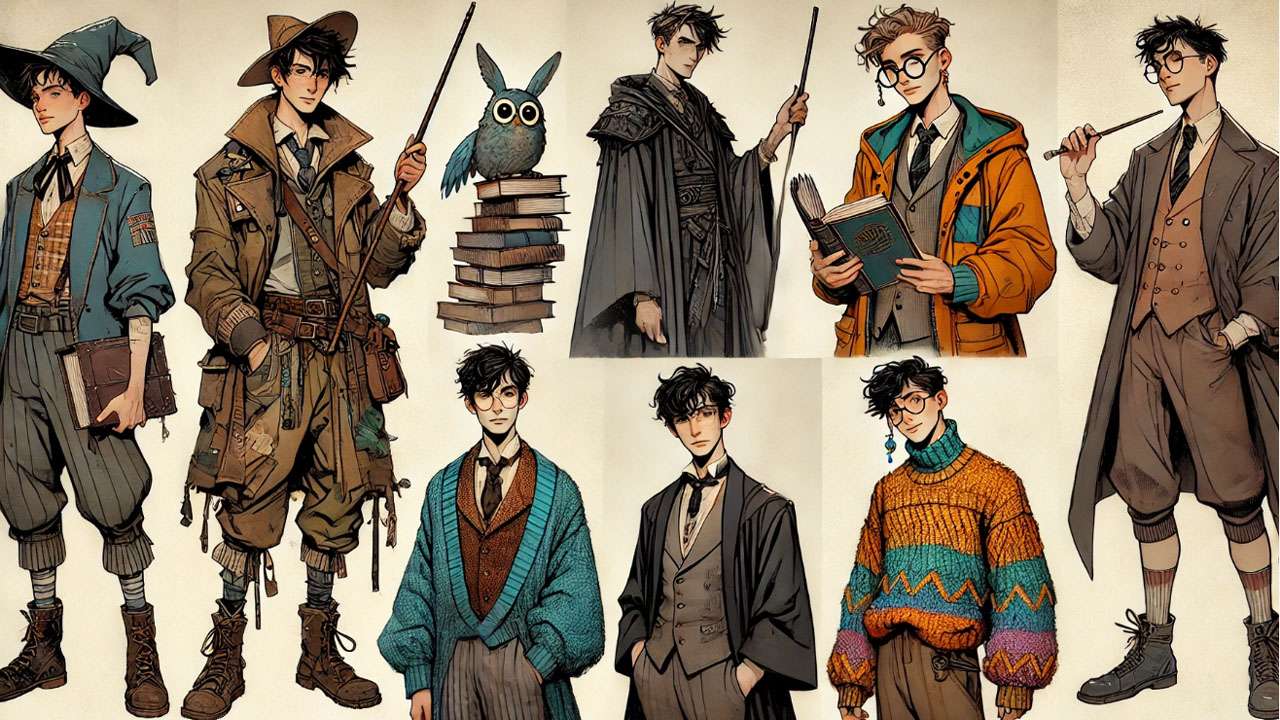
One of the most fascinating parts of Harry Potter costume design secrets is how each character’s wardrobe told their personal story. Let’s explore how the costume team used clothing to reflect personality, growth, and even inner conflict. Whether you’re a fan, cosplayer, or design enthusiast, these insights offer practical inspiration you can use.
🧥 Harry Potter: The Boy Who Wore Layers
Harry’s clothes weren’t flashy—but that was the point.
- Early Years: Oversized, worn-out clothes from the Dursleys highlighted neglect and invisibility.
- Hogwarts Uniform: His Gryffindor robes were simple but well-worn—representing humility and bravery.
- Later Films: He wore darker, more practical layers (like jackets and knitwear) as he matured and faced real danger.
🔧 Tip for Cosplayers: Use second-hand clothing to replicate Harry’s worn-in style. Look for earth tones and subtle layering.
📚 Hermione Granger: Smart, Strong, and Stylish
Hermione’s outfits evolved just like her character.
- Early Look: Neat school uniforms and tidy hair—reflecting discipline and academic focus.
- Yule Ball Gown: A delicate pink dress that broke expectations and showed a softer side.
- Final Films: Functional clothing (jackets, jeans, boots) to match her warrior-like role in the fight against Voldemort.
🎨 Design Insight: Her clothing was never loud—but always thoughtful, just like her.
🧶 Ron Weasley: Hand-Me-Down Hero
Ron’s costumes were full of texture and charm.
- Signature Look: Mismatched sweaters, plaid shirts, and slightly baggy robes.
- Why It Works: It showed his modest background and added visual warmth to his personality.
- Yule Ball Disaster: That infamous ruffled dress robe? Designed to show his awkwardness and discomfort with tradition.
🧵 Fun Fact: Many of Ron’s jumpers were handmade to reflect his mum’s love (and budget).
🐍 Draco Malfoy: Sleek, Sharp, and Superior
Draco’s wardrobe screamed elegance and entitlement.
- Slytherin Style: Always in clean lines, cool colors, and pristine robes.
- Design Purpose: His polished look contrasted the trio’s rugged appearance—reinforcing his privileged upbringing.
- Later Films: His costumes became darker and more rigid, echoing his internal conflict and fear.
👔 Style Tip: If you want to recreate Draco’s look, go for high collars, tailored fits, and luxurious fabrics like velvet or satin.
🌈 Luna Lovegood: Whimsical and Unapologetically Herself
Luna’s costumes were pure creative freedom.
- Color Explosion: Bright, mismatched colors that didn’t follow trends or house rules.
- Iconic Accessories: Radish earrings, Spectrespecs, and the roaring lion hat—many of which were created with help from Evanna Lynch herself!
- Message: Luna’s wardrobe celebrated individuality and imagination.
✅ Why These Secrets Matter
Understanding each character’s costume choices helps fans and creators connect with the story on a deeper level. These designs weren’t just pretty—they were purposeful. Whether you’re creating your own costume, teaching design, or simply rewatching the films, you’ll see new layers in every outfit.
3. Secrets from the Set: Little-Known Costume Facts 🎬🧵
Peek behind the curtain and discover the surprising details that made Harry Potter’s wardrobe unforgettable.
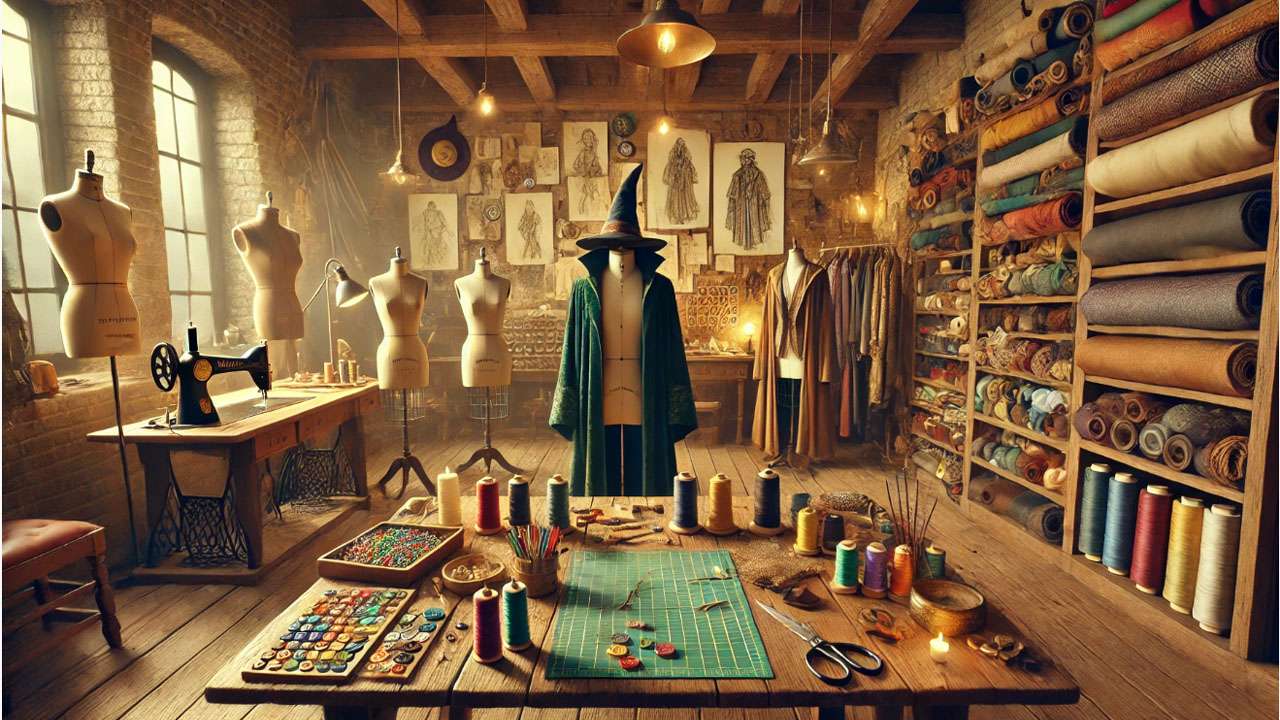
The Harry Potter films weren’t just cinematic magic—they were a masterclass in costume design. And while many fans focus on what appeared on screen, the real Harry Potter costume design secrets lived backstage. These lesser-known facts reveal just how much work, creativity, and precision went into dressing the Wizarding World.
🧥 Over 600 Hogwarts Uniforms Were Made
Yes, you read that right! With a huge cast of students, stunt doubles, and background actors, the costume department created hundreds of school robes, ties, and sweaters. Many were customized by house, height, and activity—like flying or dueling.
📸 Behind-the-Scenes Tip: Uniforms for action scenes were reinforced or altered slightly to allow better movement on broomsticks or during wand battles.
🧦 Dobby’s Costume Was Made from Real Scraps
Dobby’s look may seem simple, but it was intentionally crafted. Designers used real scraps of fabric and aged them to look worn and sad—symbolizing his life as a house-elf. Even his tea towel “tunic” had subtle stitching details fans often miss.
🎨 Design Insight: Texture and distressing were key to making magical creatures feel grounded in reality.
🧙♂️ Robes Were Adapted for Action
Flowing wizard robes look beautiful—but not when you’re running from Death Eaters. The costume team created two versions of many robes:
- Full-length for walking and classroom scenes
- Modified versions with slits or elastic for stunts and action shots
🎥 Fun Fact: The “stunt robes” had hidden features like harness loops and breathable fabric blends.
🎭 Actors Influenced Their Own Costumes
Some cast members helped shape their character’s look:
- Evanna Lynch (Luna) designed some of her own accessories, including the famous radish earrings.
- Emma Watson (Hermione) suggested that her character wear more ethical and sustainable clothing in the later films—reflecting Hermione’s values.
🧵 Real-World Tip: Don’t be afraid to infuse personal touches into your cosplay—it adds authenticity!
🧹 Many Costumes Were Recycled
To save on budget and materials, the production reused several pieces:
- School uniforms were passed between background actors
- Some wizard cloaks and trousers reappeared in later films with new distressing
- Even socks and shoes were repurposed for other characters!
4. How Costume Designers Made Magic Real ✨🧵
Behind every enchanted robe and battle-worn cloak was real craftsmanship—and a lot of clever design.
One of the most impressive aspects of the Harry Potter films is how real the magic feels. While visual effects played a part, much of that realism came from the costume design itself. Here’s how the designers used everyday tools and expert techniques to bring fantasy to life in a believable, relatable way.
🪄 Real Fabrics, Real Wear
The costume team focused on natural materials like wool, cotton, and leather to give clothing texture, weight, and realism. These fabrics aged well on camera and helped actors move and feel like they were truly part of a magical world.
🧥 Actionable Tip: For cosplay or fan recreations, choose real fabrics over synthetics—they hang better, look richer, and feel more authentic.
🎨 Color Theory for Mood and Meaning
Colors weren’t random. Each one was carefully chosen to reflect the tone of the scene or the emotional state of a character:
- Warm tones (like burgundy, gold, and brown) were used for comforting, familiar scenes—especially in Gryffindor.
- Cool tones (like green, grey, and black) helped create tension or highlight darker characters, such as the Malfoys.
- Faded, dusty colors were used in the later films to show the toll of war and time.
🎯 Design Insight: Use color intentionally to match character mood, setting, or story arc—even in your own designs.
🧹 Built for Action, Magic, and Movement
Costumes had to look magical and move realistically. Designers built robes and cloaks with hidden features like:
- Slits and stretch panels for dueling and flying scenes
- Reinforced seams for stunts and wirework
- Flowing hems that caught wind for added drama
🎥 Film Trick: Robes were sometimes wired or weighted to move just right during slow-motion or action shots.
🧙 Hidden Details That Added Depth
Even elements you’d never see on screen were crafted with care:
- House-elf costumes were stitched with real, rough hand-sewing to reflect their status.
- Inner robe linings often featured house colors or protective symbols.
- Buttons, buckles, and embroidery had magical references that most fans missed.
5. From Film to Fan: What Cosplayers and Designers Can Learn 🎭🧵
Turn costume inspiration into real-world magic.
Whether you’re creating a screen-accurate cosplay, designing a magical theater piece, or just dressing up for a Harry Potter-themed event, the Harry Potter costume design secrets offer tons of practical lessons. The good news? You don’t need a movie-sized budget to apply them.
🎨 1. Let the Character Guide the Costume
Start with personality, not just appearance. Ask:
- Is the character bold or shy?
- Are they refined, quirky, or rugged?
- What colors, fabrics, or textures reflect that?
For example, Luna Lovegood’s mix-and-match colors show her individuality, while Draco Malfoy’s tailored black robes reflect pride and control.
💡 Tip: Write a quick “character bio” before you start designing or choosing pieces.
🧥 2. Focus on Fabric Choice
One reason the costumes looked so authentic is because they used real materials:
- Wool for sweaters
- Cotton for shirts and robes
- Leather for accessories
You can recreate this feel without overspending by thrifting or using fabric swaps.
🛍️ Budget Hack: Look for second-hand jackets, coats, or trousers to distress and repurpose.
🧼 3. Age Your Pieces for Realism
The costumes in the films rarely looked brand-new. They were weathered, faded, or patched to feel lived-in.
Here’s how to replicate that look:
- Lightly sand areas of fabric to soften edges
- Use tea or diluted paint to tint and age fabric
- Add stitched patches or frayed hems where appropriate
🧵 Pro Tip: Hermione’s war-era outfits had subtle scuff marks and dirt—small touches that made a big difference.
👟 4. Think Practical for Events
If you’re attending a convention or party, comfort matters too.
- Choose lightweight robes for hot venues
- Add hidden pockets for essentials (yes, even wizards need snacks)
- Use Velcro or stretch bands for easy costume changes
🎒 Smart Trick: Modify the inside of your robe with breathable lining or soft fabric for all-day wear.
🪄 5. Add a Personal Magical Touch
Even in the films, actors had input into their costumes. You can too!
- Add a wand holster
- Customize a school badge
- Embroider initials or symbols into your robes
✨ Creative Bonus: Personalizing your costume helps it stand out and feel truly yours—just like in the Wizarding World
06.Evolution Across the Series: From Philosopher’s Stone to Deathly Hallows ✨🧥
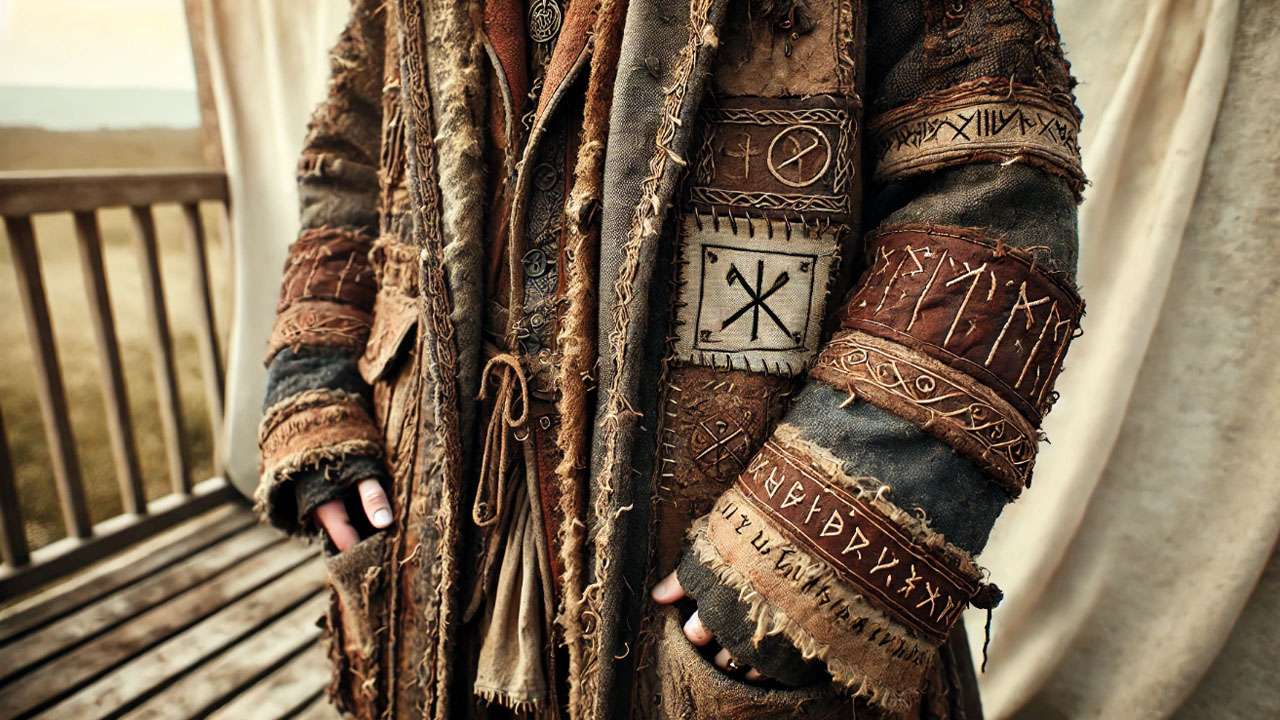 The Harry Potter films span an entire decade—and the costume design evolves just as much as the characters do. What started as whimsical wizard wear slowly transformed into darker, more mature fashion choices that mirrored the tone of the story and the growth of its characters. Let’s explore how the wardrobe shifted from The Philosopher’s Stone to The Deathly Hallows—and what made each era unique 👇
The Harry Potter films span an entire decade—and the costume design evolves just as much as the characters do. What started as whimsical wizard wear slowly transformed into darker, more mature fashion choices that mirrored the tone of the story and the growth of its characters. Let’s explore how the wardrobe shifted from The Philosopher’s Stone to The Deathly Hallows—and what made each era unique 👇
1. Early Years: Magical and Childlike (Films 1–3) 🎒🧙♂️
In the first three films, costume designer Judianna Makovsky (Philosopher’s Stone) and later Lindy Hemming (Chamber of Secrets, Prisoner of Azkaban) focused on creating a world that felt both magical and innocent.
- Robes were looser and brighter, resembling school uniforms with a whimsical twist.
- House colors were bold and playful, making it easy to tell Gryffindors from Slytherins at a glance.
- Hats and cloaks added charm and tradition—especially during feast scenes and Quidditch matches.
🎯 Takeaway: These early costumes helped introduce viewers to the magical world, emphasizing innocence and wonder.
2. Teenage Transition: Realism and Rebellion (Films 4–5) 🎭🧢
By Goblet of Fire and Order of the Phoenix, students were growing up—and so were their clothes.
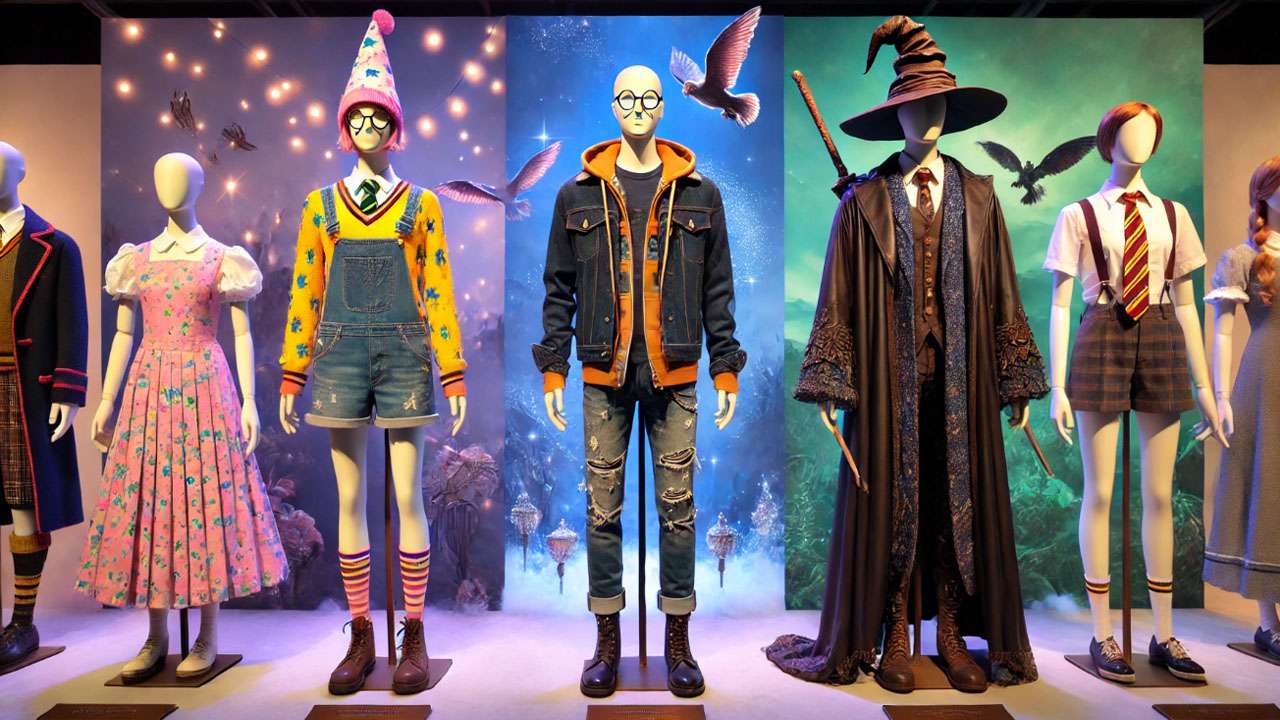
- More casual, modern outfits began appearing, like jeans, hoodies, and fitted jackets.
- The Yule Ball scene in Goblet of Fire was a major turning point. Characters like Hermione got glamorous gowns, while Ron’s infamous hand-me-down dress robes revealed family struggles through costume.
- Costumes became tools for storytelling, showing individual personality and inner conflict.
🎯 Takeaway: Mid-series designs reflect teen identity, peer pressure, and emotional growth.
3. Final Chapters: Dark, Gritty, and Grown-Up (Films 6–8) ⚔️🖤
As the tone turned darker, so did the wardrobe. Jany Temime, lead costume designer from Prisoner of Azkaban onward, brought a sleek and cinematic look to the later films.
- Neutral and muted color palettes reflected a world at war—think grays, blacks, and deep burgundies.
- Characters dressed for survival: layered coats, rugged boots, and practical outfits dominated scenes in Deathly Hallows.
- Villains like Voldemort and Bellatrix had distinctive, chilling looks that enhanced their presence. Their costumes were often tailored yet terrifying, symbolizing power and fear.
🎯 Takeaway: Final film costumes match the stakes—darker, sharper, and more symbolic than ever before.
💡 Costume Evolution = Character Evolution
The shift from playful robes to war-ready gear isn’t just about fashion—it’s a visual journey of growing up. Costume designers used clothing to mirror emotional changes, deepen character arcs, and visually support the film’s maturing themes.
The Magic is in the Details ✨🧵
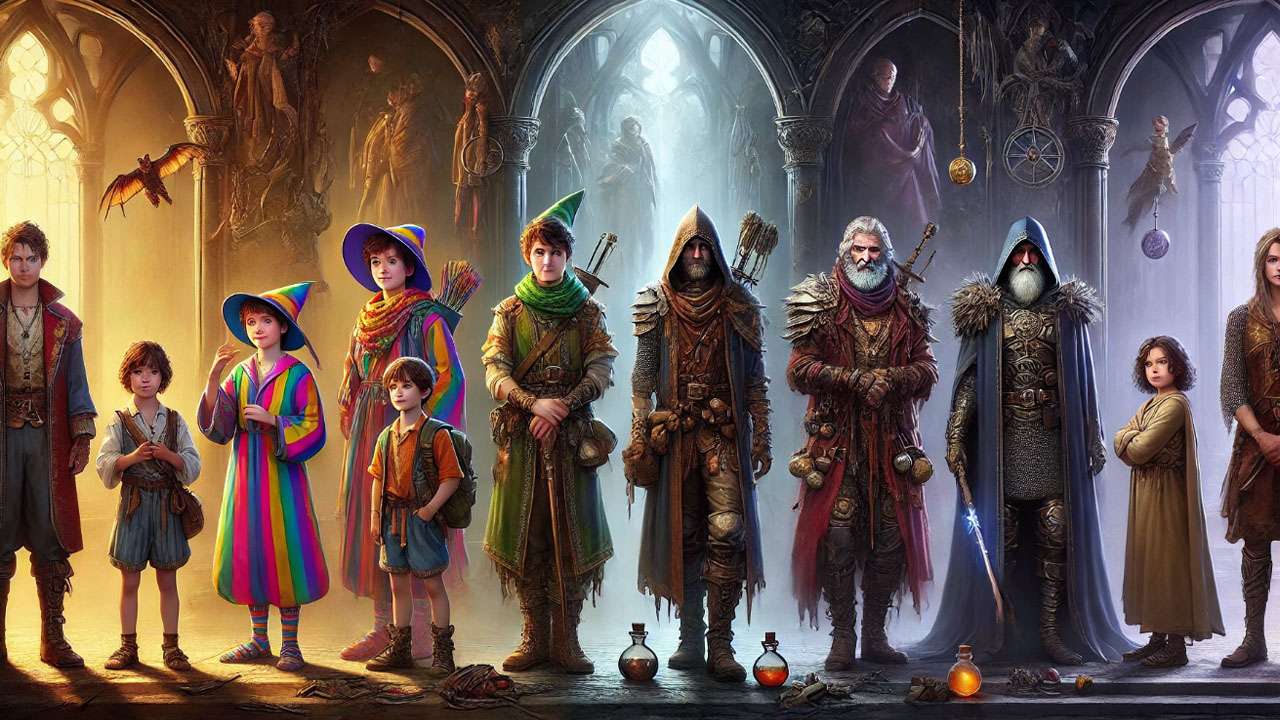 Harry Potter’s costume design isn’t just background decoration—it’s one of the most powerful storytelling tools in the entire series. From the first flick of a wand in Philosopher’s Stone to the final battle in Deathly Hallows, every robe, cloak, and quirky accessory helped bring J.K. Rowling’s world to life 🎬🌍
Harry Potter’s costume design isn’t just background decoration—it’s one of the most powerful storytelling tools in the entire series. From the first flick of a wand in Philosopher’s Stone to the final battle in Deathly Hallows, every robe, cloak, and quirky accessory helped bring J.K. Rowling’s world to life 🎬🌍
What makes these costumes truly magical is how they evolve with the characters. Whether it’s Hermione’s transformation from a bookish schoolgirl to a fearless fighter, or Draco’s shift from polished prefect to conflicted teen, the wardrobe choices reflect real emotional growth.
Frequently Asked Questions (FAQs)
1. Who designed the costumes for the Harry Potter movies?
Costume designer Jany Temime took over starting with Harry Potter and the Prisoner of Azkaban and played a major role through the rest of the series. She worked closely with the directors to reflect each character’s personality and development through their outfits.
2. How did the costume design reflect character growth in Harry Potter?
Costumes evolved to match the characters’ emotional journeys. For example, Harry’s clothes became darker and more fitted over time, symbolizing his maturity and the growing darkness of the story.
3. Were the Hogwarts uniforms based on real school uniforms?
Yes, the early costumes were inspired by traditional British boarding school uniforms. Later films introduced more casual, layered looks to make the characters feel more modern and relatable.
4. What materials were used to create the wizard robes?
Robes were made using a mix of natural and synthetic fabrics to balance realism and comfort for long filming days. Velvet, wool, and cotton were commonly used, especially for more elaborate outfits like Dumbledore’s.
5. Did each Hogwarts house have a unique costume style?
Yes, each house had subtle differences in color accents, fabric textures, and accessories. For instance, Slytherin robes often used darker tones and sleeker designs, while Gryffindor’s featured warmer shades and layered textures.
6. How were magical costumes like Death Eater masks and Quidditch gear designed?
Magical costumes were custom-designed with special effects and stunt requirements in mind. Death Eater masks were individually crafted for each character, while Quidditch gear was reinforced for action scenes but still looked authentic on screen.
7. Were any costumes reused across different movies?
Yes, many costumes were reused or repurposed to save time and maintain continuity. For example, background student robes were often recycled with minor changes to collars or house patches.
8. Can you visit or see the original Harry Potter costumes today?
Yes, many original costumes are on display at the Warner Bros. Studio Tour in London. Fans can see iconic outfits like Harry’s robes, Hermione’s Yule Ball dress, and even Voldemort’s chilling costume up close.
